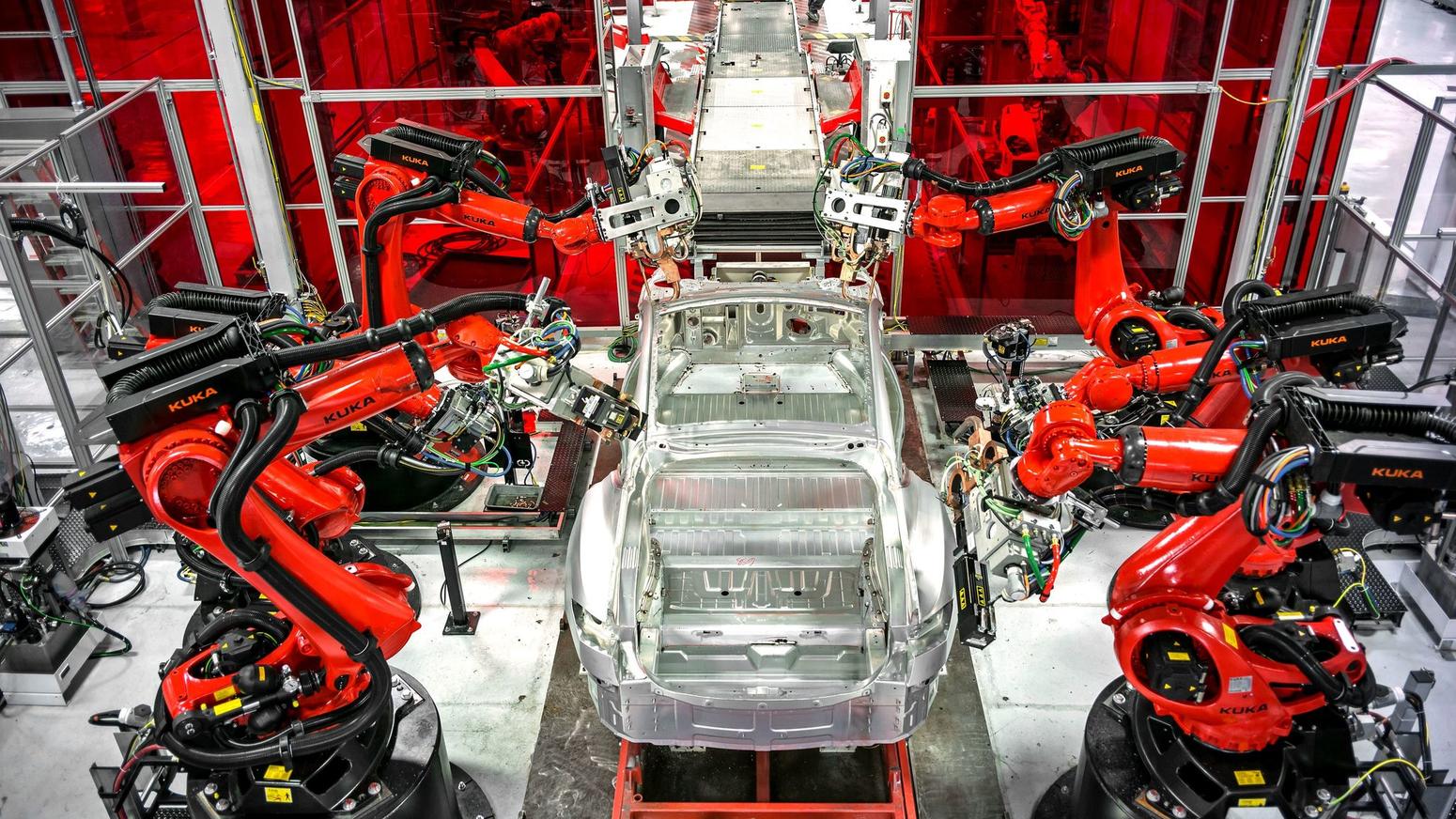Tesla Model 3 bottleneck is battery production
 |
| Robots can't beat humans when it come to making EV batteries |
Sometimes it's the task of the Tesla communications department to explain, or provide context, or simply clean up the confusion after CEO Elon Musk says or tweets something about the electric-car maker.
In the latest case, it was Musk's statement about Tesla Model 3 production equipment that required the good people of the company's long-suffering PR group to swing into action.
On last Wednesday's call for financial analysts to cover the full-year 2017 results, Musk dropped a mention of new Model 3 battery production lines.
He began the presentation by noting that the limiting factor for Model 3 production was how many battery modules, each containing many individual 2170 lithium-ion cells, could be produced at the company's gigafactory outside Reno, Nevada.
"Module production is fundamentally the limiting factor on Model 3 output," he admitted, "which is ironic since battery modules really should be the thing we're best at."
The company was "a little over-confident, a little complacent" and" got too comfortable with our ability to do battery modules because we've been doing that since the start of the company."
But two of the four module production zones Tesla had subcontracted to other companies "flat out didn't work," requiring redesign that would normally take 18 months to be done in six to nine months.
Meanwhile, it is producing Model 3 modules using "a series of small automated stations manned by people" that have been "remarkably effective," Musk said, and "to some degree [have] renewed my faith in humanity" and humans' ability to adapt and learn.
That "semi-manual, semi-automatic line is exceeding all three of the automatic lines," he said.
Those "semi-auto lines [are] where we have people that are moving materials, perhaps between the machines, that are actually performing the operations," added Tesla's longtime chief technical officer JB Straubel.
"But there is still a degree of automation doing the operation," he stressed–likely in a response to earlier media reports that Model 3 batteries were largely being built by hand rather than by automated production equipment.
Analyst Rod Lache of Deutsche Bank Securities then asked about the Model 3 run rate using current semi-automated production techniques, and what Tesla expected that rate to be once the fully automated line was up and running.
Straubel responded:
Well, it's probably a level of granularity that is not productive to dive into in terms of exactly what is coming from which operation. But we do expect the new automated lines to be landing and starting up at the Gigafactory in just the next—landing in sight within this quarter.
Then Musk added:
Yes. We expect the new automated lines to arrive next month in March, and then it's already … it's been … it's working in Germany.
So, that's got to be disassembled, brought over to the Gigafactory, and re-assembled and then brought into operation at the Gigafactory. It's not a question of whether it works or not. It's just a question of disassembly, transport, and reassembly.
Much head-scratching ensued, including a Bloomberg story Wednesday night that recapitulated Musk's statement that the production line created and successfully tested in Germany by Tesla Grohmann will be shipped to the U.S. next month.
The company later issued the following statement stressing that its first-quarter projections for Model 3 production (using the semi-automated line) did not depend on the German equipment:
Tesla’s ability to meet its target of 2,500 per week by end of Q1 2018 is not dependent on the additional equipment that is currently located in Germany, as that equipment is expected to start ramping production during Q2 2018.
With respect to battery module production, Tesla’s ability to meet its target of 2,500 per week by end of Q1 2018 is dependent only on the equipment that is already present at Gigafactory 1, as well as the incremental capacity that is currently being added through the semi-automated lines that were also discussed during the conference call.
And there you have it. John Voelcker/Greencarreports
